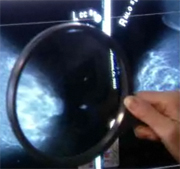Found to increase the number of high-risk women deemed eligible for primary prevention
THURSDAY, Sept. 24, 2015 (HealthDay News) — Greater numbers of high-risk women eligible for primary prevention of breast cancer are identified by incorporating benign breast disease (BBD) diagnoses into the Breast Cancer Surveillance Consortium (BCSC) risk model, according to a study published online Aug. 17 in the Journal of Clinical Oncology.
Jeffrey A. Tice, M.D., from the University of California, San Francisco, and colleagues developed and validated a competing-risk model using 2000 to 2010 Surveillance, Epidemiology, and End Results data for breast cancer incidence and 2010 vital statistics to adjust for the competing risk of death.
The researchers found that of the 1,135,977 women (age 35 to 74 years) undergoing mammography with no history of breast cancer, 17 percent had a prior breast biopsy. Invasive breast cancer was diagnosed in 17,908 women over a mean follow-up of 6.9 years. Risk was slightly over-predicted using the BCSC BBD model (expected-to-observed ratio, 1.04) and had modest discriminatory accuracy (area under the receiver operator characteristic curve, 0.665). Adding BBD to the model increased the proportion of women with proliferative findings, with an estimated five-year risk of 3 percent or higher increasing from 9.3 to 27.8 percent (P < 0.001).
“Greater numbers of high-risk women eligible for primary prevention after BBD diagnosis are identified using the BCSC BBD model,” the authors write.
Copyright © 2015 HealthDay. All rights reserved.








